Reused Denim House
13.10.21In recent weeks, on my bike rides in Regent’s Park, I have been watching the annual Frieze art fair being built. The event only lasts five days, but its build has taken almost a month; dominating and distorting this vital public green space in the name of art.
Huge logistics and temporary infrastructure have been involved in the building of its two tented art markets, Frieze London and Masters. Each of them are larger than what remains of many high streets ravaged by years of austerity and now the pandemic. Normally quiet access roads have been throttled by extra water and power works, and queues of HGVs delivering everything this temporary world needs - including electric vehicles.
Huge logistics and temporary infrastructure have been involved in the building of its two tented art markets, Frieze London and Masters. Each of them are larger than what remains of many high streets ravaged by years of austerity and now the pandemic. Normally quiet access roads have been throttled by extra water and power works, and queues of HGVs delivering everything this temporary world needs - including electric vehicles.



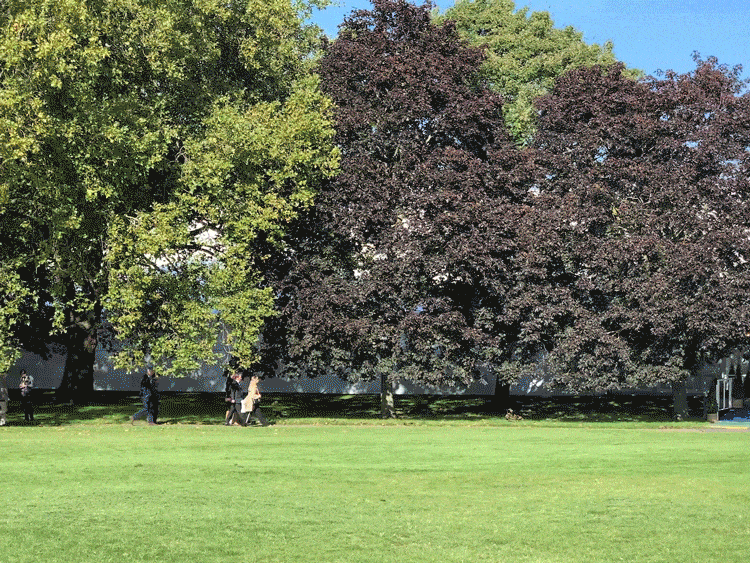
Watching this has been unsettling. With climate change now rightfully high in the public’s consciousness and the Cop26 summit just weeks away, I am curious at how the carbon footprint of a single use event like this does not attract scrutiny. It is not okay. No amount of tree planting should have to be done to offset it. It should not happen in the first place.
It convinces me though that the principle of reusing must be the touchstone of Model Village. I had prototyped early models from old tarp ground sheets, and will return to this approach more consciously through reusing, repurposing and recycling materials wherever possible.
It convinces me though that the principle of reusing must be the touchstone of Model Village. I had prototyped early models from old tarp ground sheets, and will return to this approach more consciously through reusing, repurposing and recycling materials wherever possible.
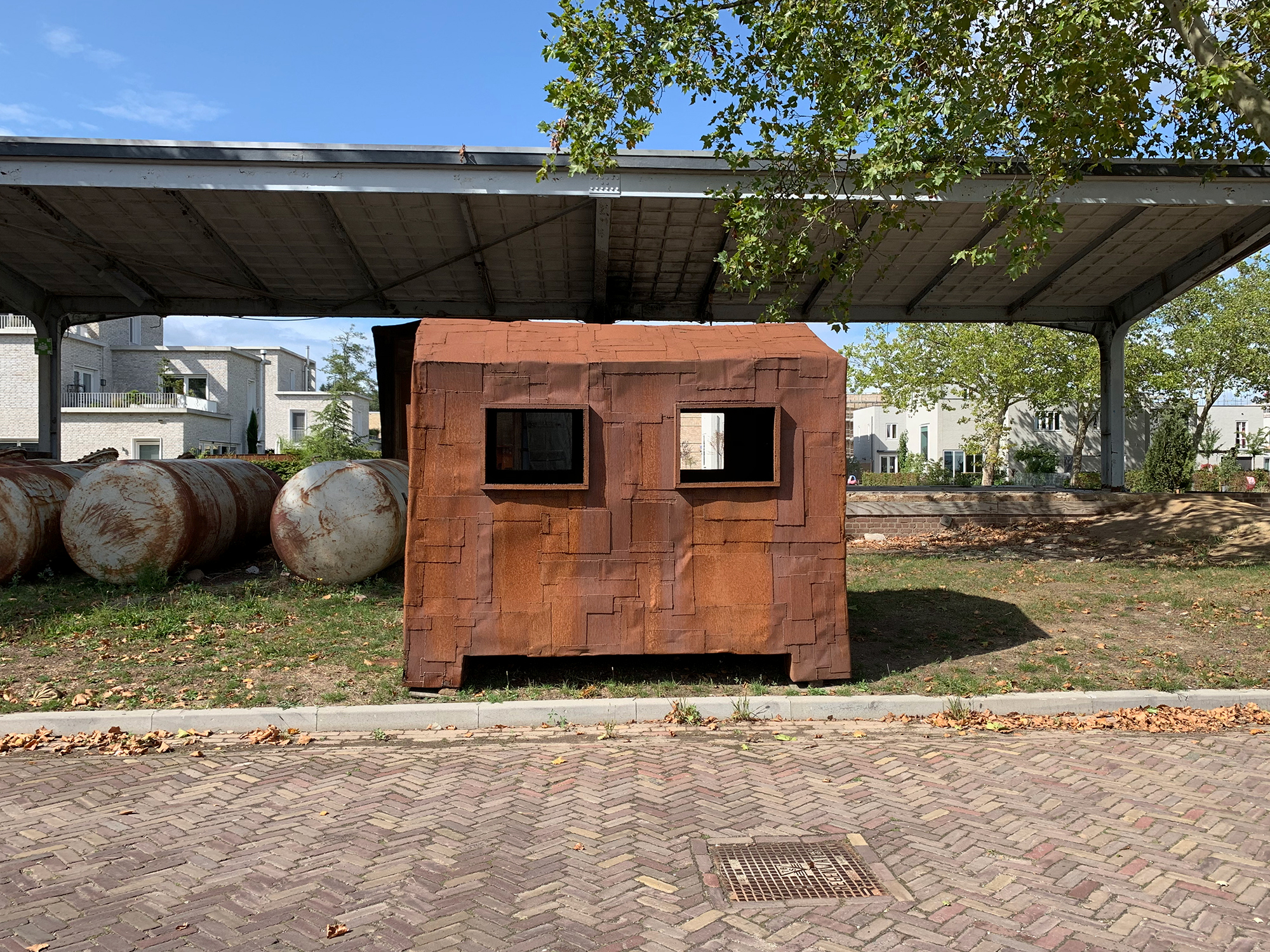
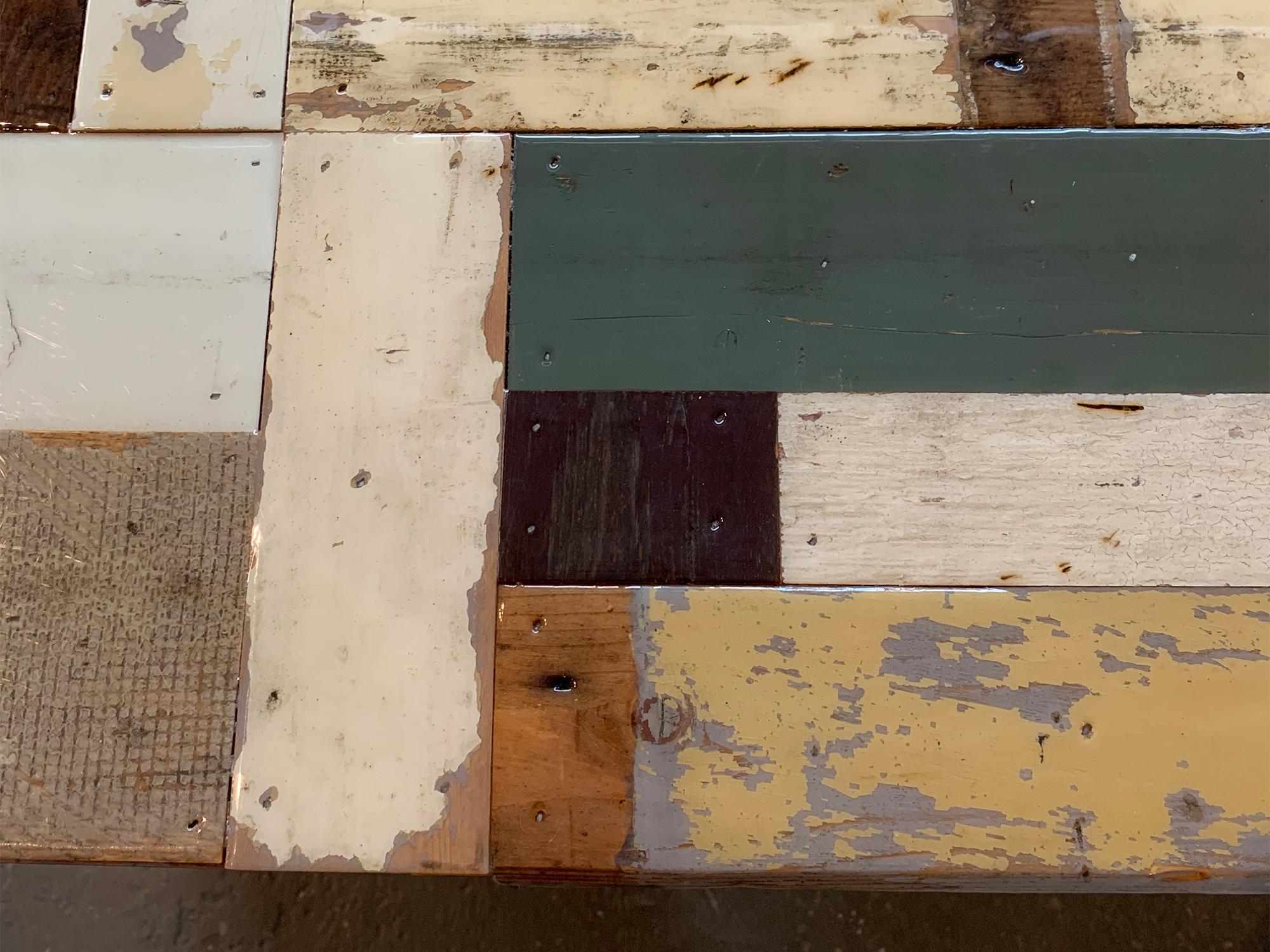
It brings to mind the products of Piet Hein Eek that reuse old timber floorboards from houses due for demolition. The splits, cracks and flaking paint are part of the aesthetic, giving each piece its own identity.
Hein Eek wants to show that even ugly materials and a rough-and-ready finish can produce beautiful products, and also to change how the Western world values labour. The idea being that the craftsperson who is making something and enjoying the process, takes their time to do it well, meaning more value is imbued in the product2.
I turn my attention to what materials I have around for reuse. If the business of art is not under the spotlight for its carbon footprint, the fashion industry definitely is. It is currently reponsible for 10% of all greenhouse gasses; and globally only 12% of clothing ends up being recycled3.
Hein Eek wants to show that even ugly materials and a rough-and-ready finish can produce beautiful products, and also to change how the Western world values labour. The idea being that the craftsperson who is making something and enjoying the process, takes their time to do it well, meaning more value is imbued in the product2.
I turn my attention to what materials I have around for reuse. If the business of art is not under the spotlight for its carbon footprint, the fashion industry definitely is. It is currently reponsible for 10% of all greenhouse gasses; and globally only 12% of clothing ends up being recycled3.
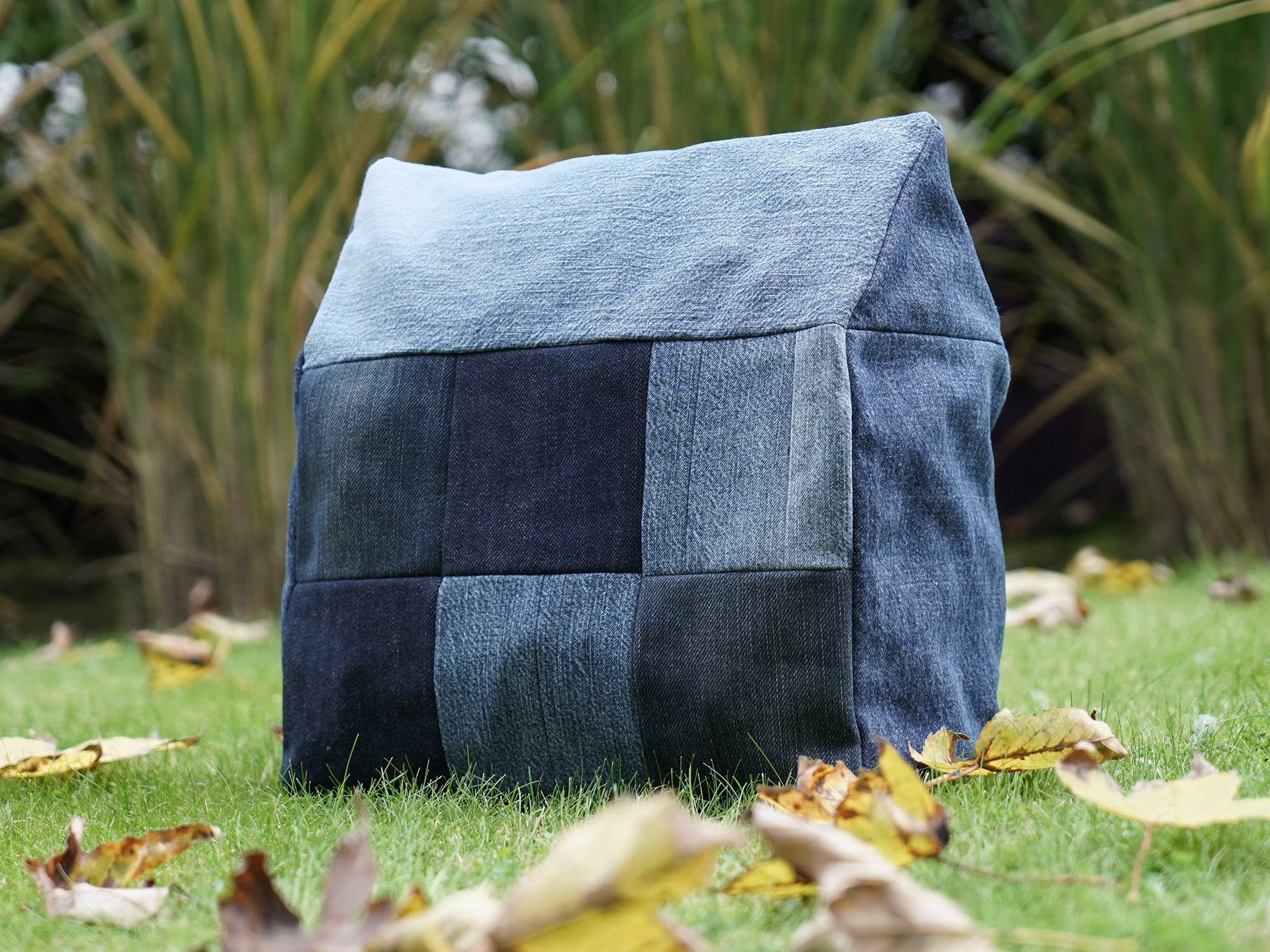
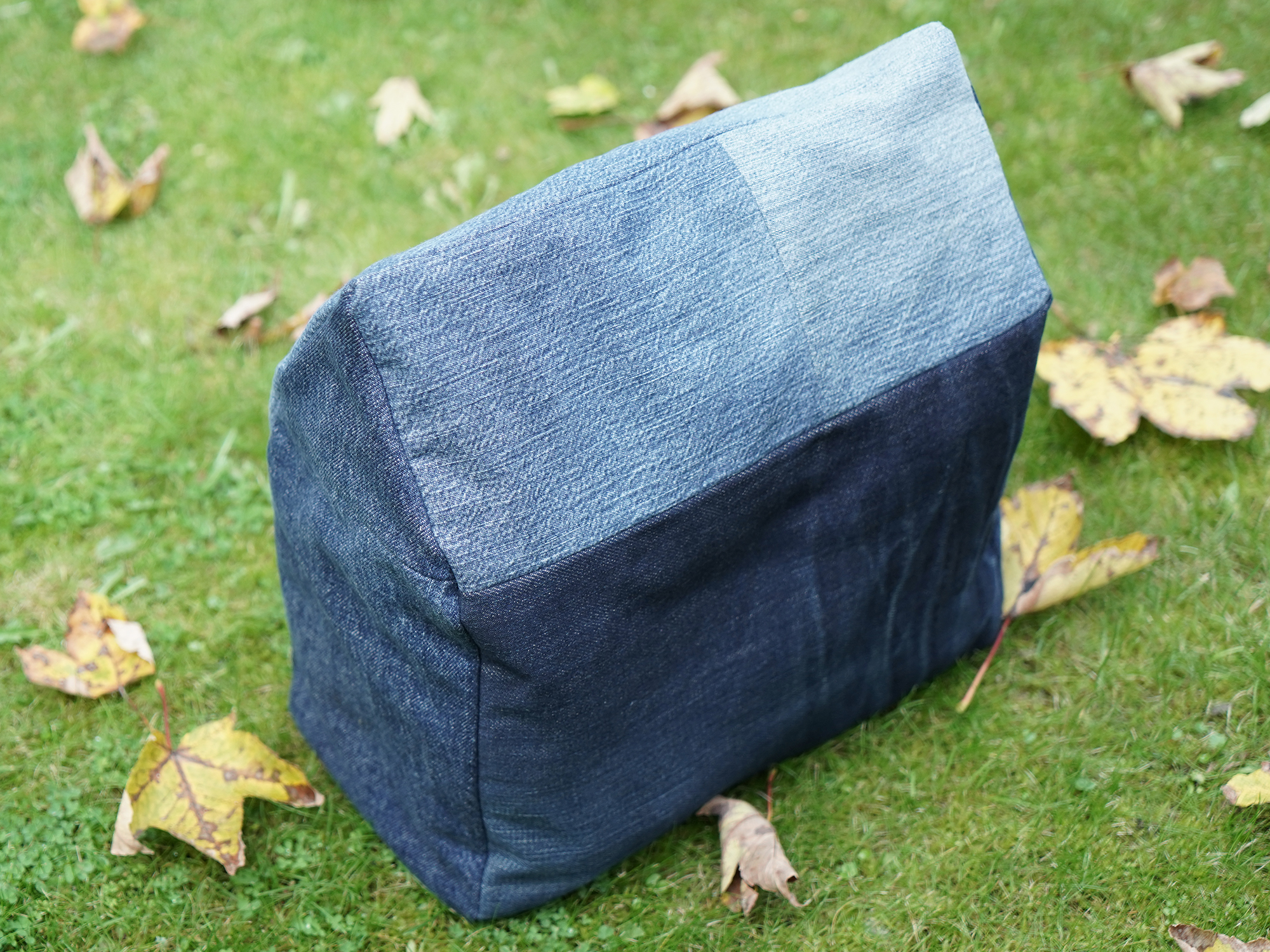
I scale the Basic House pattern up from the previous tarp version, and cut up old jeans for this reused denim prototype. I include the creases and worn areas. They are an important feature as they provide a glimpse into the previous life of the material. And now that the model building is bigger, I have to sew patches together to make up panels, which is curiously resonant of the half-timbered houses in Black & White Trail 1.9.21. Whatever denim is left behind is stuffed inside. It is a house made entirely from discarded jeans.
I visit my local Shelter4 shop to buy more jeans. More scaled-up buildings are to come.
I visit my local Shelter4 shop to buy more jeans. More scaled-up buildings are to come.
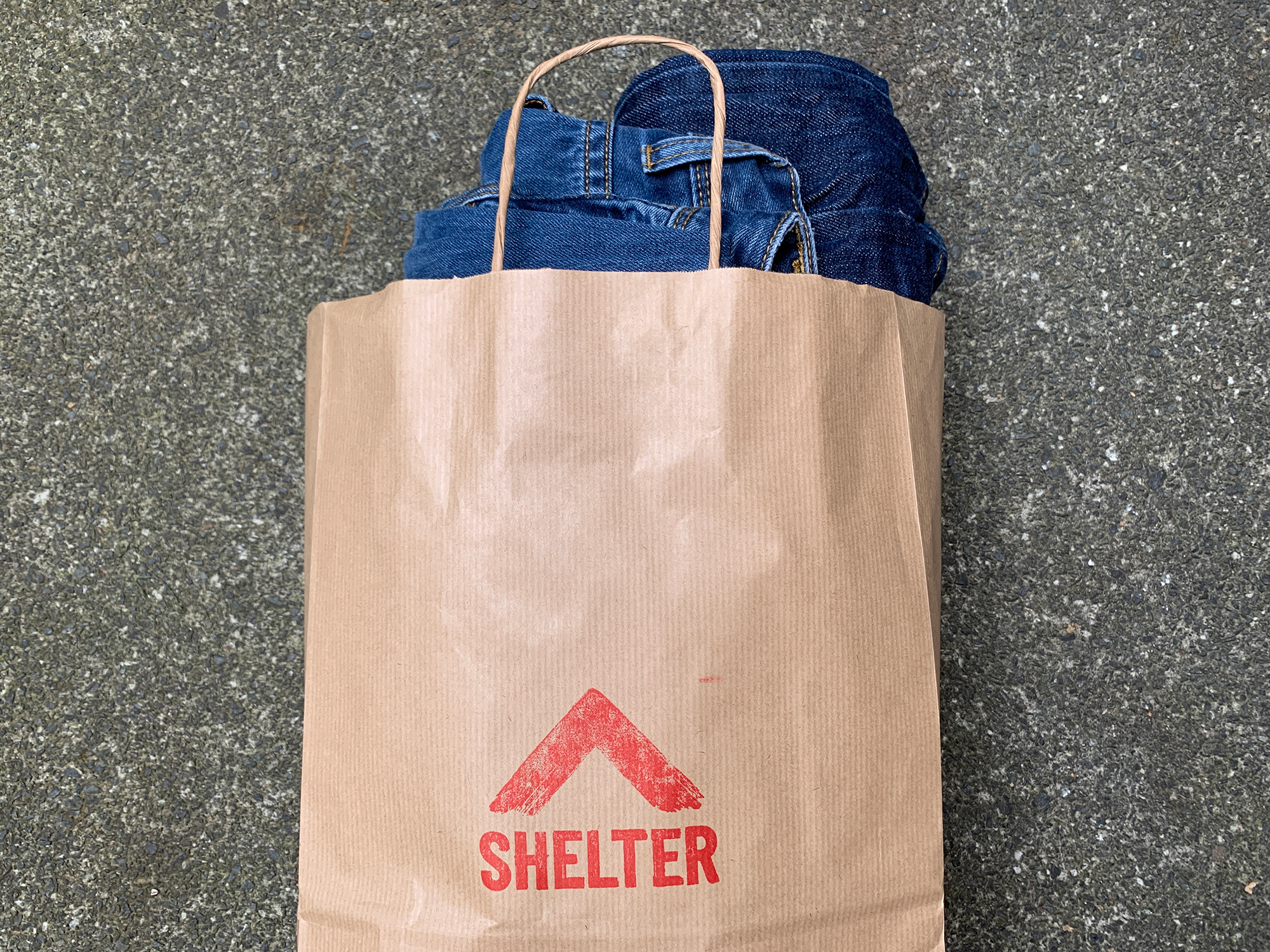
1 Pictures from my 2019 visit to the Piet Hein Eek facility, Eindhoven, NL.
2 Hein Eek, P. Dons of Design: Piet Hein Eek (2020) news.scp.co.uk.
3 11 million items of clothing go to landfill in the UK every week. Once they end up in landfill, natural textiles can take hundreds of years to decompose and can release methane and CO2 gas into the atmosphere as part of this process. Synthetic textiles are designed not to decompose which means that in landfill, they can release toxic substances into groundwater and the surrounding soil.
Why is Recycling Textiles Important? londonrecycles.co.uk
While most clothes with care will last many years, changing fashions mean their lifespan is artificially shortened by consumers’ changing tastes. Industry figures suggest modern clothing will have a lifespan of between 2-10 years.
Globally just 12% of the material used for clothing ends up being recycled. An estimated 92 million tonnes of textile waste is created each year and the equivalent to a rubbish truck full of clothes ends up on landfill sites every second.
‘The current fashion system uses high volumes of non-renewable resources, including petroleum, extracted to produce clothes that are often used only for a short period of time, after which the materials are largely lost to landfill or incineration,’ says Chetna Prajapati, who studies ways of making sustainable textiles at Loughborough University. ‘This system puts pressure on valuable resources such as water, pollutes the environment and degrades ecosystems in addition to creating societal impacts on a global scale.’
There are good reasons to seek out alternatives to chucking clothes in the bin – globally the fashion industry is responsible for 10% of all greenhouse gas emissions, with textile production alone is estimated to release 1.2 billion tonnes of greenhouse gases into the atmosphere every year. Vast amounts of water are also needed to produce the clothes we wear too and the fashion industry is responsible for 20% of global waste water.
At the same time we are buying more clothes than ever - the average consumer now buys 60% more clothing than they did 15 years ago. More than two tonnes of clothing are bought each minute in the UK, more than any other country in Europe. Globally, around 56 million tonnes of clothing are bought each year, and this is expected to rise to 93 million tonnes by 2030 and 160 million tonnes by 2050.
Why Clothes are so Hard to Recycle bbc.com/future
4 Shelter is a registered charity that campaigns to end homelessness and bad housing in Great britain. It gives advice, information and advocacy to people in need, and tackles the root causes of bad housing by lobbying government and local authorities for new laws and policies. (source: Wikipedia); shelter.org.uk.
2 Hein Eek, P. Dons of Design: Piet Hein Eek (2020) news.scp.co.uk.
3 11 million items of clothing go to landfill in the UK every week. Once they end up in landfill, natural textiles can take hundreds of years to decompose and can release methane and CO2 gas into the atmosphere as part of this process. Synthetic textiles are designed not to decompose which means that in landfill, they can release toxic substances into groundwater and the surrounding soil.
Why is Recycling Textiles Important? londonrecycles.co.uk
While most clothes with care will last many years, changing fashions mean their lifespan is artificially shortened by consumers’ changing tastes. Industry figures suggest modern clothing will have a lifespan of between 2-10 years.
Globally just 12% of the material used for clothing ends up being recycled. An estimated 92 million tonnes of textile waste is created each year and the equivalent to a rubbish truck full of clothes ends up on landfill sites every second.
‘The current fashion system uses high volumes of non-renewable resources, including petroleum, extracted to produce clothes that are often used only for a short period of time, after which the materials are largely lost to landfill or incineration,’ says Chetna Prajapati, who studies ways of making sustainable textiles at Loughborough University. ‘This system puts pressure on valuable resources such as water, pollutes the environment and degrades ecosystems in addition to creating societal impacts on a global scale.’
There are good reasons to seek out alternatives to chucking clothes in the bin – globally the fashion industry is responsible for 10% of all greenhouse gas emissions, with textile production alone is estimated to release 1.2 billion tonnes of greenhouse gases into the atmosphere every year. Vast amounts of water are also needed to produce the clothes we wear too and the fashion industry is responsible for 20% of global waste water.
At the same time we are buying more clothes than ever - the average consumer now buys 60% more clothing than they did 15 years ago. More than two tonnes of clothing are bought each minute in the UK, more than any other country in Europe. Globally, around 56 million tonnes of clothing are bought each year, and this is expected to rise to 93 million tonnes by 2030 and 160 million tonnes by 2050.
Why Clothes are so Hard to Recycle bbc.com/future
4 Shelter is a registered charity that campaigns to end homelessness and bad housing in Great britain. It gives advice, information and advocacy to people in need, and tackles the root causes of bad housing by lobbying government and local authorities for new laws and policies. (source: Wikipedia); shelter.org.uk.